Introduction
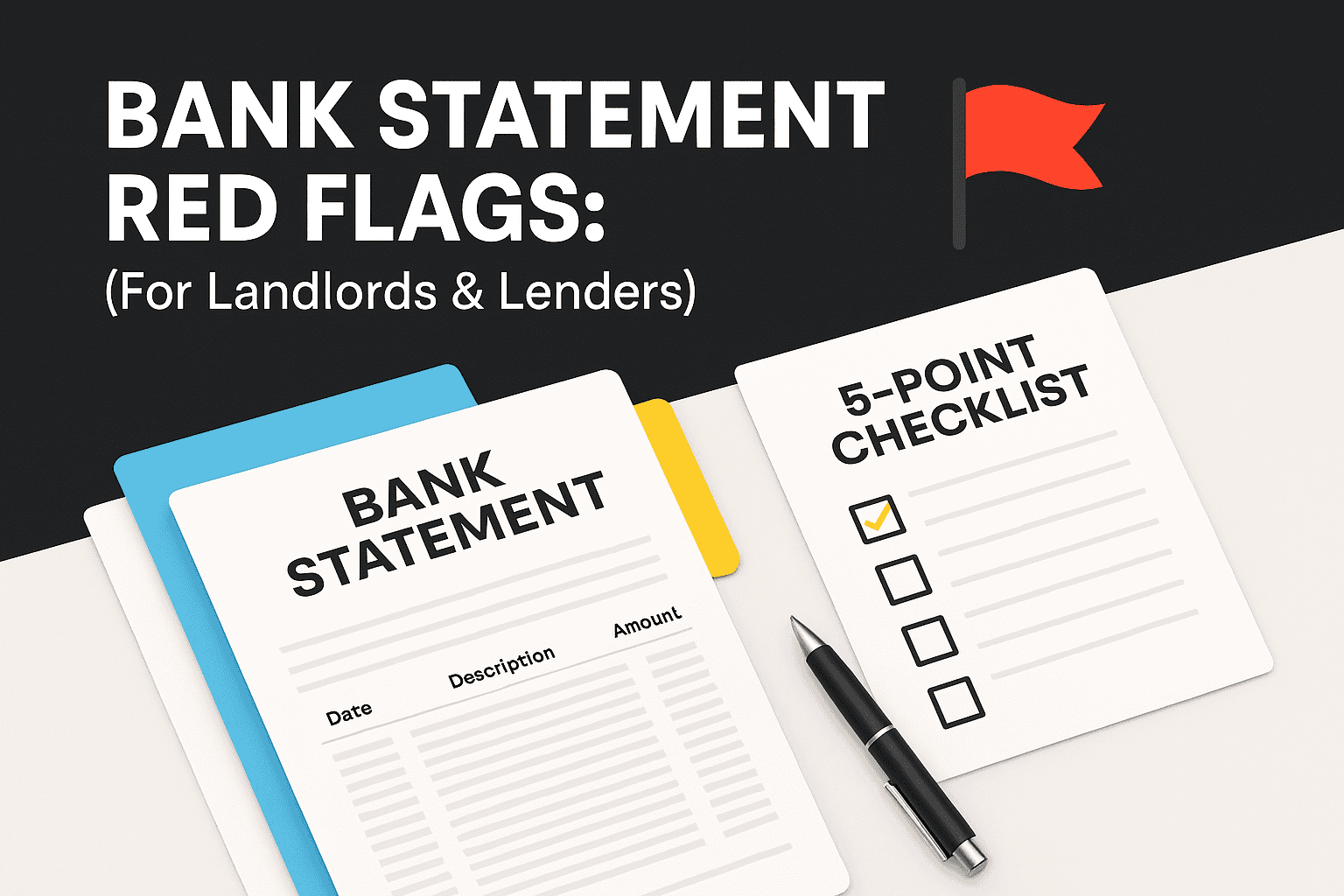
By the FinancialDocsProvider.com Editorial Team
Last updated: August 2025
If you’re preparing documents for a rental, mortgage, or auto loan, you’ve likely heard about bank statement red flags. These are patterns or anomalies that cause underwriters, property managers, and compliance teams to slow down or deny an application. The good news: most issues are avoidable with clear formatting, consistent data, and a quick pre‑submission check.
This guide explains what reviewers look for in the US, UK, and Canada, when formatting is allowed, and what crosses the line into fraud. You’ll also get a practical 5‑point checklist, mini‑scenarios, and official resources so you can submit confident, compliant statements the first time.
Related Entities & Terms
- Proof of income, affordability assessment, tenancy referencing
- W‑2 wages (US), 1099 income (US), T4 slips (CA), Notice of Assessment (NOA, CA)
- Pay stubs / payslips; direct deposit verification
- Self‑employment: invoices, ledgers, profit & loss statements
- Anti‑Money Laundering (AML) and Know Your Customer (KYC)
- Consumer Financial Protection Bureau (CFPB, US)
- Federal Trade Commission (FTC, US)
- Internal Revenue Service (IRS, US)
- GOV.UK guidance & legislation (UK)
- Financial Consumer Agency of Canada (FCAC, CA)
- Canada Revenue Agency (CRA, CA)
- Chargebacks, overdrafts, NSF fees
- Statement pagination, running balance, transaction metadata
Our role is simple: we help organize, format, and package your documents so they’re clear and professional. We never fabricate income or alter facts—period. If you need bank statement formatting or proof of income editing that respects compliance, you’re in the right place.
Legality Basics: Formatting vs. Falsification (US/UK/CA)
Every jurisdiction treats the content of financial statements as a matter of truth and authenticity. Formatting that improves readability is allowed. Falsification that changes facts is not. Below are high‑level principles to keep you safe while meeting legitimate reviewer expectations across the US, UK, and Canada.
United States: Consumer Protection & Fraud Laws
In the US, lenders and landlords rely on bank statements to assess affordability, stability, and identity consistency. Submitting altered facts can trigger fraud concerns, regulatory complaints, or civil claims. Learn about protecting yourself from financial scams and document integrity via the CFPB (consumerfinance.gov). For fraud enforcement and misrepresentation, see the FTC, and for tax records and income reporting, consult the IRS.
United Kingdom: Evidence & Fraud Awareness
UK letting agents and lenders use statements to verify income cadence, rent affordability, and credit behavior. While redaction for safety can be appropriate, misrepresenting amounts, dates, or counterparties risks a fraud allegation. See the government’s guidance and legislation collection on legislation.gov.uk for statutory context, and GOV.UK resources on fraud awareness.
Canada: Transparency & Affordability Checks
In Canada, lenders and housing providers look for consistent name matching, sufficient history, and clear running balances. For consumer money‑management and rights information, the FCAC offers practical guidance. For income reporting and notices of assessment, see the Canada Revenue Agency (CRA).
What Edits Are Allowed? Practical, Lawful Examples
Reviewers want statements that are easy to read and verify. The following are routine, lawful formatting steps that do not change factual content.
1) Redaction for Safety
Masking part of an account number or physical address protects you from identity theft. Leave enough detail for the reviewer to match your identity and the bank source. Example: show the last four digits (•••• 1234) and keep your name visible.
2) Readability & Pagination Fixes
Repair cut‑off lines, fix orientation, remove blank pages, and restore page numbers. If a download splits a month into two PDFs, combine in order so running balances make sense. Add simple bookmarks (e.g., “Jan 2025,” “Feb 2025”).
3) Export & Accessibility
Convert images to searchable PDFs so underwriters can find amounts quickly. Ensure text layers match the visual text. Avoid heavy compression that blurs small fonts or bank logos.
4) Non‑Destructive Highlights
You may highlight employer deposits or rent payments as a visual aid. The raw numbers must remain unedited and discoverable beneath the highlight.
Need help packaging your file? Learn more about our bank statement formatting and proof of income editing.
What’s Illegal? Alterations That Cross the Line
Any edit that changes the facts of your statement is prohibited. The biggest risks are:
Amounts, Dates, Parties
Editing a payroll deposit from $1,542.18 to $2,542.18, moving a date forward to fit a pay cycle, or replacing “Zelle” with “Payroll” is misrepresentation. So is renaming a counterparty or changing a check image.
Synthetic Deposits or Deleted Debits
Inserting extra deposits or removing overdrafts distorts cash flow. Underwriters routinely re‑calculate running balances and compare them to source files. Inconsistencies typically result in denial and may be reported.
Fake Pages, Seals, or Bank Marks
Do not import a bank logo or “seal” to suggest a different institution or product type. Reviewers know each bank’s typography, pagination, and even metadata habits. Fakes are spotted quickly.
When you see an error from your bank, the right solution is to request a corrected statement from the bank—not to “fix” the PDF yourself.
Use Cases: Renters, Auto Loans, and Small Business
Renters & Tenancy Referencing
Landlords in all three markets check for regular income, rent‑to‑income ratio, and stability. Expect a request for 3–6 months of statements, plus payslips or employer letters. In the UK, letting agents may cross‑check with employment references; in Canada, some landlords ask for an NOA (Notice of Assessment) in addition to statements.
Scenario: Maya applies for an apartment. Her statements show pay every other Friday, but one deposit posted on a Monday because of a bank holiday. She adds a short note to explain the timing. The cadence is consistent. The reviewer is satisfied.
Auto Loans
Auto finance teams look for affordability and competing obligations (insurance, prior loans). Round‑number “cash” deposits without traceable sources prompt questions. Provide employer name matching your payslip and keep transfers between your own accounts labeled clearly.
Small Business Loans (SBA/UK/CA Programs)
For US SBA loans, lenders often pair statements with tax transcripts and a P&L. In the UK and Canada, small business lenders review business account statements plus VAT/GST filings or corporate tax assessments. Tie deposits to invoices and keep a simple receivables log.
W‑2 vs. Self‑Employed Packets
- W‑2 (US): submit recent pay stubs, W‑2, and 3–6 months of statements showing payroll deposits from the named employer.
- 1099 (US): provide 1099s, invoices, and statements showing client payments; include a brief note for irregular cadence.
- T4 & NOA (CA): pair T4 slips with your CRA NOA and corresponding statement deposits.
- UK: add payslips or accountant letters; ensure statement names match your photo ID.
If you need help packaging a mixed W‑2/1099 or T4/NOA set, see about our process or contact our team for guidance before you submit.
How We Work: Intake → Reconciliation → Formatting → Delivery
1) Intake
You tell us the destination (landlord, lender, broker) and their document requirements. We confirm jurisdictional norms (US/UK/CA) and clarify whether you’re W‑2/T4, 1099/self‑employed, or mixed.
2) Reconciliation
We check that page counts, sequence numbers, and running balances align between months, without touching the numbers themselves. If something looks off, we flag it so you can request corrected files from your bank.
3) Formatting
We re‑order pages, repair margins/orientation, add bookmarks, and ensure the PDF is searchable. Where appropriate, we add light highlights to employer deposits or rent payments to speed review—never altering the underlying data.
4) Delivery
You receive a clean, consolidated packet tailored to your reviewer’s checklist. We include a cover sheet summarizing months covered, account holder name(s), and a short notes section for any timing anomalies.
Our Boundaries (Non‑Negotiable)
- No changing amounts, dates, parties, check images, or bank branding.
- No adding or deleting transactions.
- No “official‑looking” seals or watermarks that imply bank issuance.
Curious about turnaround and pricing? We’ll point you to the right service tier and explain timelines up front.
5‑Point Compliance Checklist (Pre‑Submission)
Use this quick scan before sending statements to a landlord, lender, or broker. It prevents 80% of avoidable issues.
1) Identity & Name Match
- Does the statement name match your ID and application exactly (including middle initials)?
- If joint, does the application list both parties as they appear on the statement?
2) Months, Pages & Sequence
- Include the exact number of months requested (often 3–6).
- Check page numbers: “Page 3 of 6” should be present; no gaps or duplicates.
- If your bank splits months across multiple downloads, combine them in order.
3) Running Balance Logic
- Balances should roll correctly from end of prior month to start of next.
- Spot‑check a few deposits/withdrawals to confirm math continuity.
4) Income Cadence & Traceability
- Payroll labels should be recognizable and tied to your employer/payslip.
- For self‑employment, match deposits to client names or invoice numbers.
- Minimize unexplained large cash deposits; add a clarifying note when legitimate.
5) Safety & Professionalism
- Redact only what’s prudent (e.g., hide part of the account number), never amounts.
- Export as a searchable PDF with clear text and readable bank branding.
- Include a cover note for bank holidays or one‑off timing shifts.
Want a second set of eyes? Explore our proof of income editing service, which focuses on packaging and clarity—not altering facts.
Bank Statement Red Flags: What Triggers Extra Scrutiny
Underwriters and property managers are trained to look for specific tell‑tale signs. Here are the most common issues.
1) Mismatched Names or Addresses
The legal name on the statement should mirror your ID and application. Nicknames or previous addresses may require an explanation.
2) Page Sequence Gaps
Missing “Page X of Y” numbers, duplicate pages, or a sudden jump from page 2 to 4 suggests omissions or file mix‑ups.
3) Running Balance Inconsistencies
If the math doesn’t reconcile month to month, reviewers suspect edits or missing data. They will re‑compute balances.
4) Round‑Number Payroll or Cash Deposits
Real payroll is rarely a neat round number every period. Repeated round deposits raise questions about the source.
5) Counterparty Labels That Don’t Match Reality
Changing “Zelle/PayPal/Venmo” to “Payroll” to look like wages is a classic red flag. Don’t rename payment rails.
6) Font & Spacing Artifacts
Inconsistent kerning, misaligned columns, or a different font on one line can indicate tampering or a poor scan.
7) Low‑Resolution Logos or Wrong Branding
Banks use consistent typography, colors, and page furniture. Pixelated logos or anachronistic branding cues are easy to spot.
8) Duplicated or Missing Transactions
Duplicate entries or missing check images disrupt balance logic. Reviewers will call them out.
9) Metadata Tells
PDFs carry metadata. A file claiming to be “bank‑generated” that shows consumer editing software may trigger verification.
10) Excessive Overdrafts or NSF Fees
A few fees happen. A pattern suggests liquidity stress. Consider adding context if fees were due to a one‑time event.
11) Large Unexplained Cash Activity
Frequent ATM deposits or cash credits with no traceable source invite questions. Provide a brief, truthful explanation when legitimate.
12) Cross‑Account Mismatch
Transfers between “your” accounts should map to actual account numbers you control. If the labels don’t match, expect follow‑ups.
Scenario: Owen (Ontario) receives client transfers labeled only “e‑transfer.” He adds a one‑page schedule linking each deposit to an invoice. The lender sees the trace. Approval moves forward.
Scenario: Priya (London) has three months of consistent pay. One month includes a round‑number cash top‑up. She attaches a note: it’s a reimbursed travel float withdrawn and redeposited. The cadence checks out.
Resources & Further Reading
Official Guidance (Open in New Tab)
- US — Consumer Financial Protection Bureau (CFPB)
- UK — Legislation.gov.uk (Fraud & Evidence)
- Canada — Financial Consumer Agency of Canada (FCAC)
Helpful Internal Links
- Need clean packaging? See our bank statement formatting options.
- Compare tiers and pricing before you start.
- Questions about scope? Read about our process.
- Ready to proceed? Contact our team.
FAQs
What counts as a bank statement red flag?
Anything that disrupts identity, math, or authenticity. Examples: name mismatches, missing pages, balance errors, round‑number deposits, altered fonts, or unexplained cash.
Is it okay to redact my account number?
Yes. Redacting part of an account number or home address is a safety best practice. Do not redact amounts, dates, payees, or balances.
How many months should I provide?
Many landlords and lenders ask for 3–6 months. Follow the request precisely and ensure complete pagination for each month.
How do reviewers verify authenticity?
They re‑compute balances, check sequence numbers, compare metadata, and may request bank‑issued copies or verification letters.
What if a bank error appears on my statement?
Ask your bank for a corrected statement or supporting letter. Do not edit amounts or dates yourself; that’s considered falsification.
Need accurate, reliable financial documents fast? Contact FinancialDocsProvider.com now.




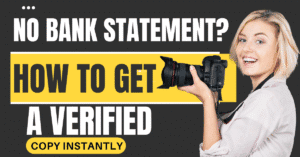
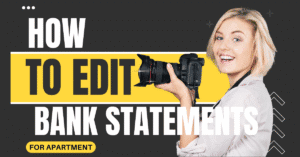
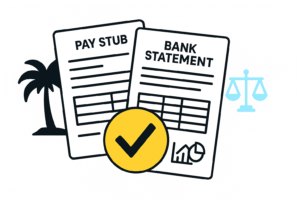
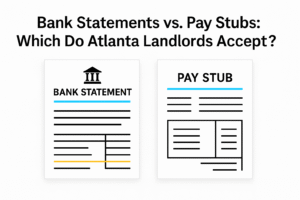
Add comment